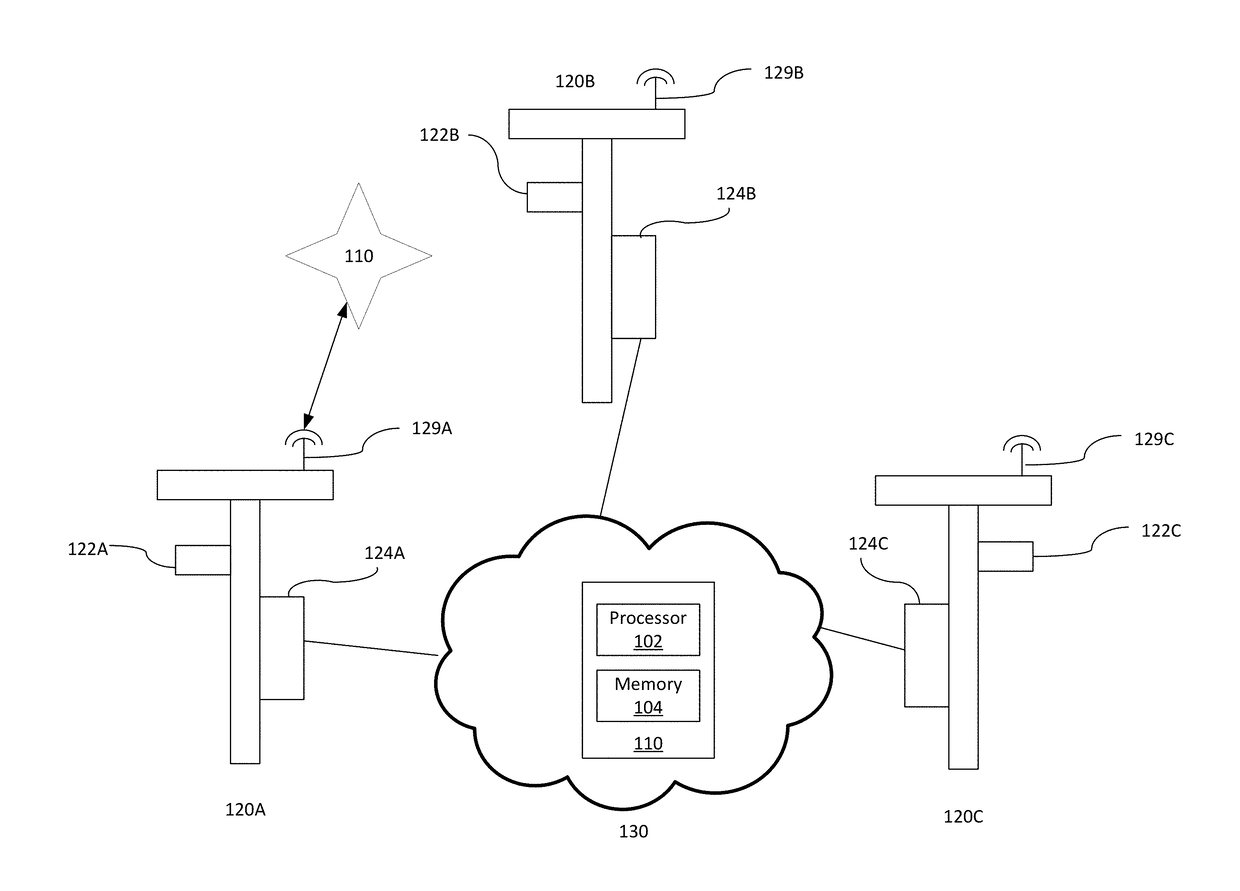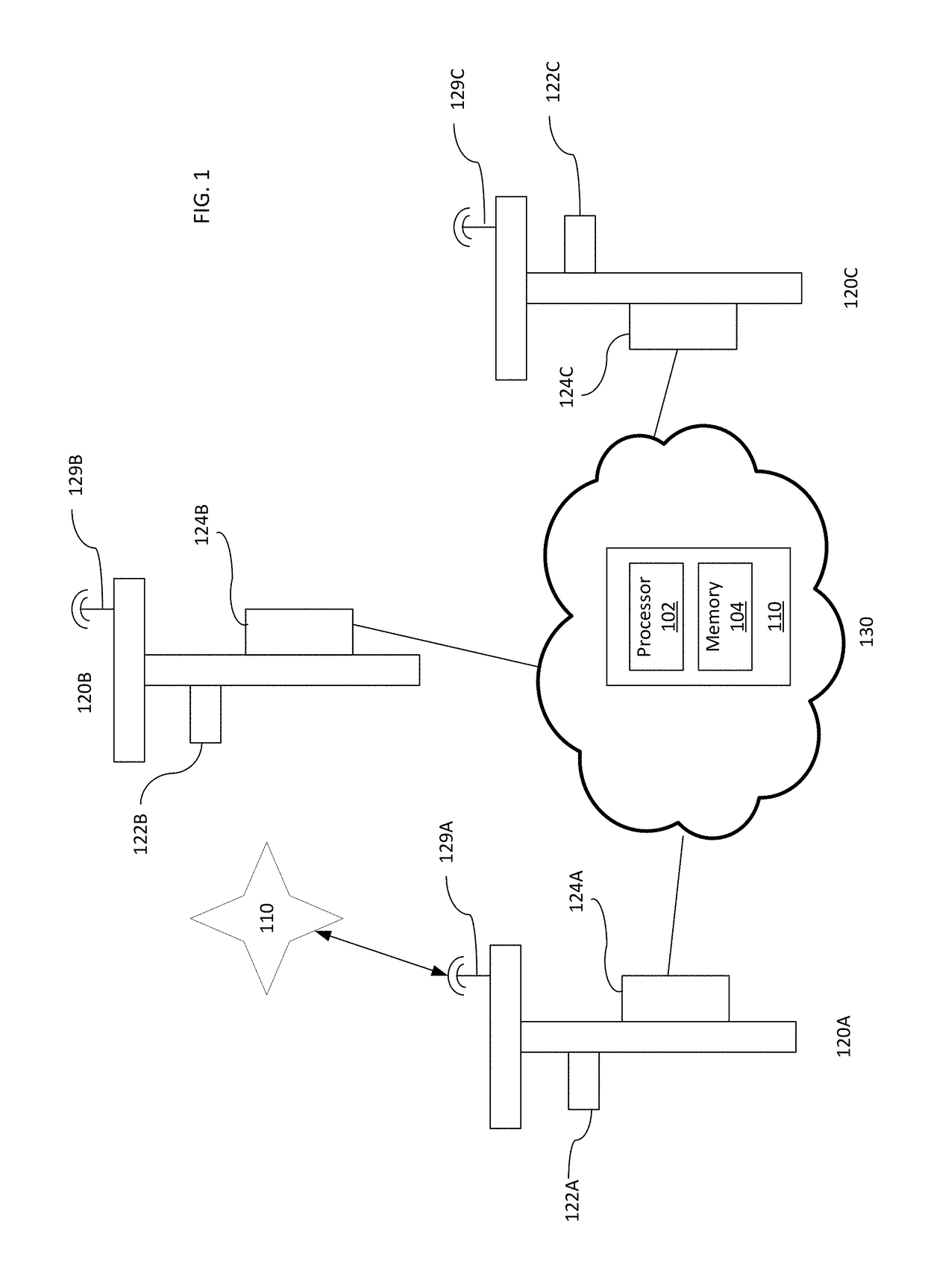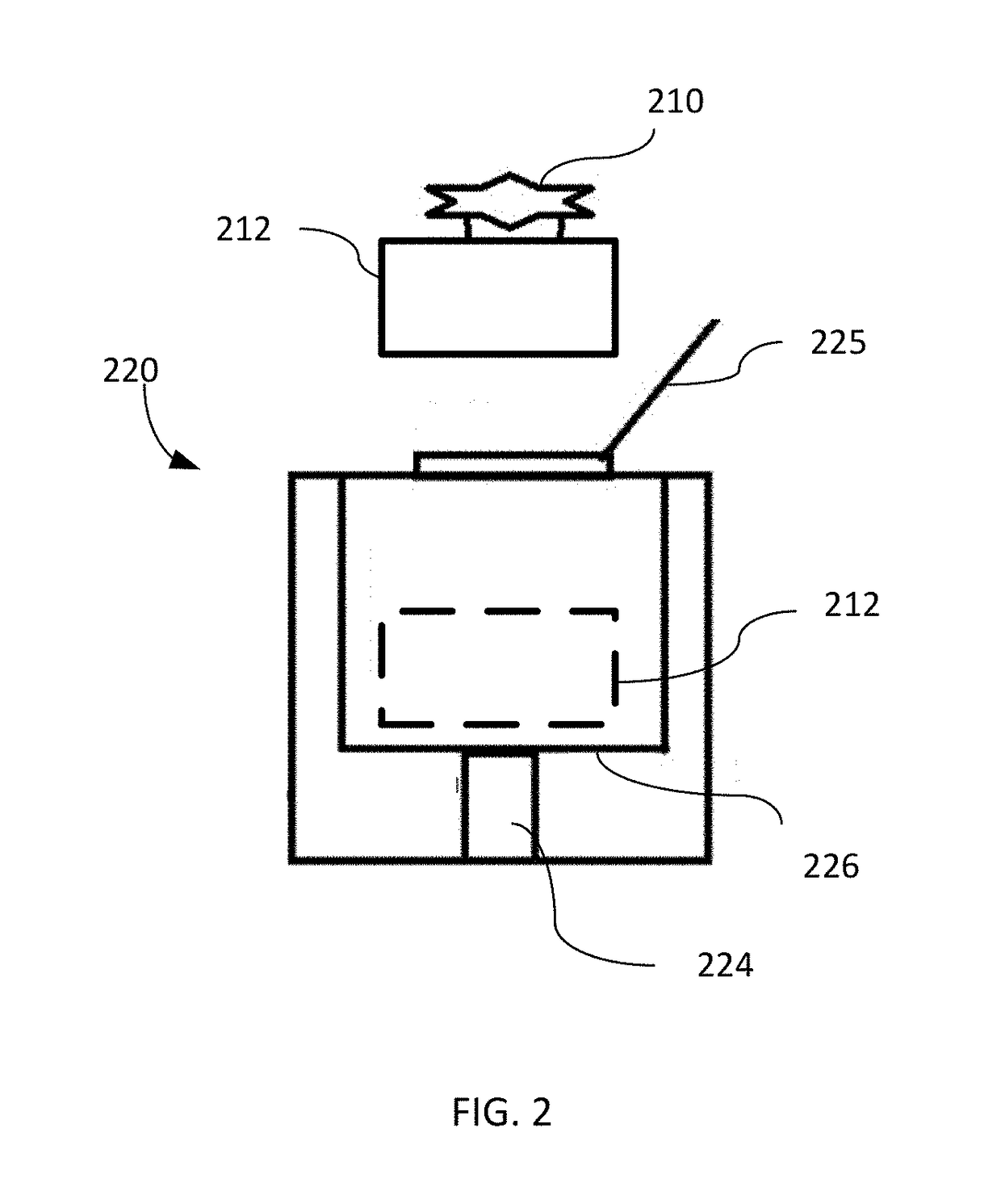Package acceptance, guidance, and refuel system for drone technology
a drone and package technology, applied in the field of drone delivery technology, can solve the problems of reducing the business value of the drone delivery system, increasing the cost, increasing the range and/or payload capacity, etc., and achieves the effects of reducing the operator's exposure to fraud, safe and successful package delivery, and enhancing customer confiden
- Summary
- Abstract
- Description
- Claims
- Application Information
AI Technical Summary
Benefits of technology
Problems solved by technology
Method used
Image
Examples
Embodiment Construction
[0025]A PAGR appliance or drone landing platform can contains various modules and supporting technologies that can provide one or more services to drones and / or package recipients.
[0026]Some embodiments described herein relate to a drone landing platform. One or more sensors coupled to the drone landing platform can detect local conditions in the vicinity of the drone landing platform. A communications system can be operable to transmit information related local conditions to a drone.
[0027]Some embodiments described herein relate to a drone landing platform that includes a package storage receptacle. The package storage receptacle can be operable to receive a package from a drone that has landed on the drone landing platform. A verification system can be operable to identify a user and provide the user access to the package. One or more sensors coupled to the drone landing platform can detect transient hazards the vicinity of the drone landing platform. A transmitter can send indica...
PUM
 Login to View More
Login to View More Abstract
Description
Claims
Application Information
 Login to View More
Login to View More - R&D
- Intellectual Property
- Life Sciences
- Materials
- Tech Scout
- Unparalleled Data Quality
- Higher Quality Content
- 60% Fewer Hallucinations
Browse by: Latest US Patents, China's latest patents, Technical Efficacy Thesaurus, Application Domain, Technology Topic, Popular Technical Reports.
© 2025 PatSnap. All rights reserved.Legal|Privacy policy|Modern Slavery Act Transparency Statement|Sitemap|About US| Contact US: help@patsnap.com



